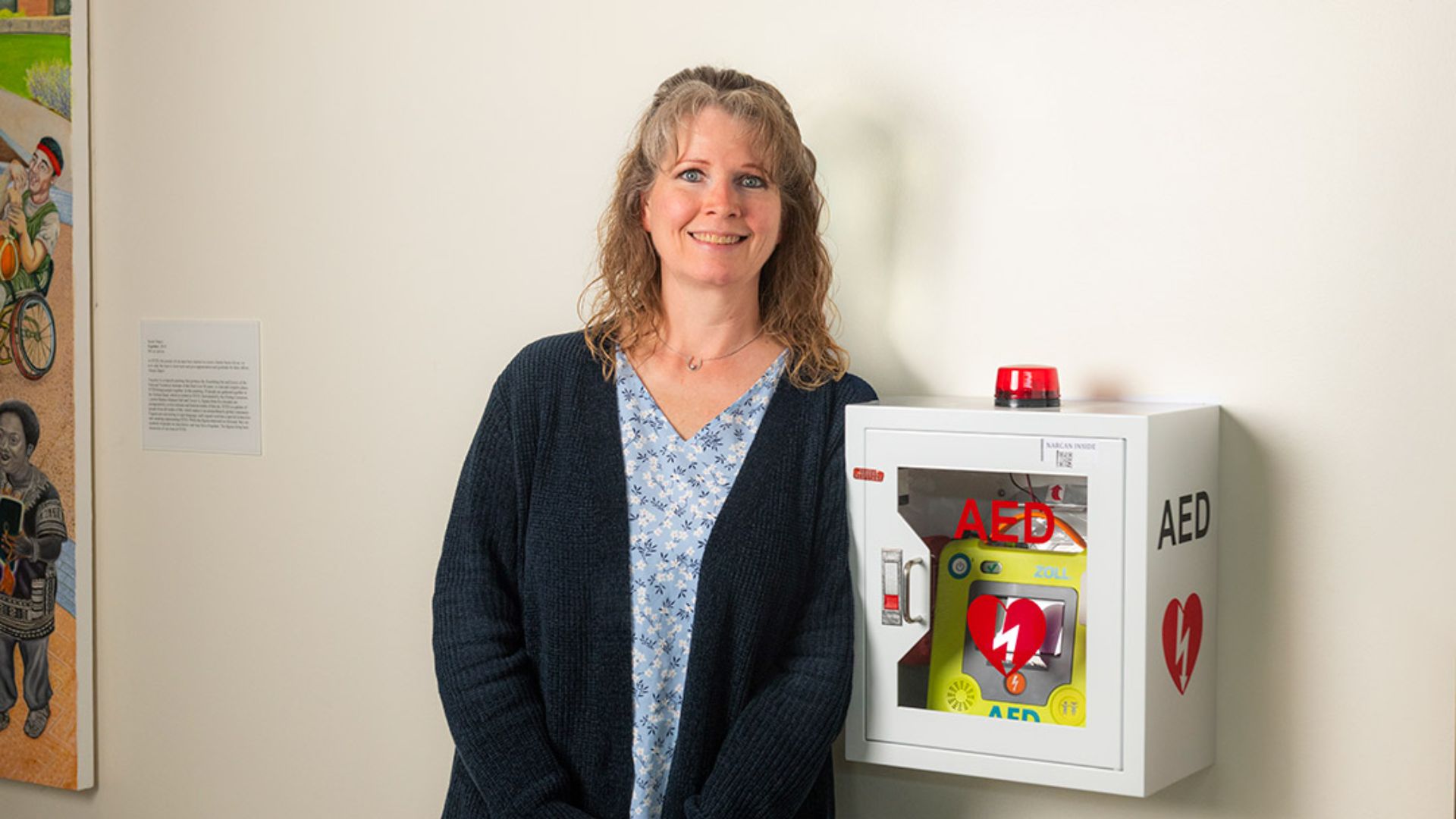Local News
NTID researchers at RIT take major steps to incorporate accessible AED machines on campus so deaf and hard-of-hearing individuals can safely use them in emergencies

Rochester, New York – Researchers at Rochester Institute of Technology’s National Technical Institute for the Deaf (NTID) are breaking new ground in making emergency medical equipment accessible to everyone. Their work has led to the introduction of Automated External Defibrillators (AEDs) with visual and text-based prompts, ensuring that deaf and hard-of-hearing individuals can use these lifesaving devices in moments of crisis.
For years, AEDs have played a crucial role in emergencies, providing step-by-step auditory instructions to guide bystanders in resuscitation efforts until professional medical teams arrive. But for someone who is deaf or hard of hearing, those audio instructions are of little use. The absence of visual support meant that a large part of the community was left at risk if they ever needed to operate an AED in an emergency situation. NTID researchers recognized this gap and worked to find a solution that could make AED use inclusive and effective for all.
Elizabeth Ayers, senior lecturer in NTID’s Department of Science and Mathematics and a licensed clinical sonographer, spoke from personal experience about the problem. “It’s terrific that AED machines have become widely available, including at RIT, but I’m deaf and what if I was alone and needed to use it on someone?” she said. “I can’t hear the auditory descriptors such as the beeps and other background sounds, and neither can the hundreds of other deaf and hard-of-hearing people on our campus. We knew that something needed to be done in order to make these lifesaving machines user-friendly for just about anyone here.”
That realization sparked a collaborative effort. Ayers teamed up with Wendy Dannels, a research associate professor, Tiffany Panko, executive director of NTID’s Deaf Hub, and RIT alumnus Menna Nicola ’25, who studied human-centered computing. Together, they reviewed 32 different AED models from seven manufacturers. Their goal was to identify FDA-approved devices that went beyond sound, offering clear text instructions and visual cues that could guide users step by step. After careful analysis, three models met the accessibility criteria, and one was ultimately selected for deployment on campus.
Thanks to their work, accessible AED machines are already available in four locations at RIT: the first floor of Lyndon Baines Johnson Hall, the Student Development Center, Hugh L. Carey Hall, and Ellingson Hall Tower A, a student residence. As existing units reach the end of their life cycle, they will gradually be replaced with the accessible version, ensuring that the entire campus will eventually be equipped.
Nicola, who is now an associate IT analyst at Dow Chemical, reflected on her role in the project, noting how meaningful the work became to her as both a student and a member of the deaf community. “I didn’t really know much about AEDs before this project began, but I was thrilled at the opportunity to conduct research that directly impacts me and other deaf people,” she said. “The most enjoyable part of the project for me was the result that led to finding a great match for an accessible AED for deaf and hard-of-hearing individuals.”
The initiative also benefited from the expertise of Christopher Knigga, director of Facilities Services and Sustainability at NTID, and Jody Nolan, RIT’s manager of Environmental Health and Safety. Their guidance helped ensure that the selected devices met the university’s needs for both safety and long-term planning.
While making AEDs accessible on campus is a significant achievement, Ayers and her team see this as just the beginning. They plan to share their research with other schools, agencies, and organizations that serve the deaf and hard-of-hearing population. “RIT was on board with installing these accessible AEDs based on our work,” Ayers explained. “It’s our team’s responsibility to be sure that other organizations know the options that are available to them. And hopefully, to take this one step further, manufacturers will continue to work alongside deaf researchers to develop and continually innovate other healthcare products that are fully accessible.”
The implications extend well beyond the RIT campus. By demonstrating that AED accessibility is both possible and practical, the project could influence future manufacturing standards and inspire other institutions to adopt inclusive medical technologies. Emergencies are unpredictable, and in those critical moments, having equipment that everyone can use is essential.
NTID’s work highlights the power of inclusive research and collaboration. By combining technical expertise, lived experience, and a clear focus on accessibility, the team has not only addressed a serious gap but also set a model for others to follow. For the deaf and hard-of-hearing community at RIT and beyond, the presence of these accessible AEDs means greater safety, empowerment, and peace of mind.

-

 Local News10 months ago
Local News10 months agoNew ALDI store close to Rochester to begin construction in late 2025 or early 2026
-

 Local News10 months ago
Local News10 months agoRochester Lilac Festival announces exciting 127th edition headliners
-

 Local News8 months ago
Local News8 months agoCounty Executive Adam Bello and members of the county legislature celebrate exceptional young leaders and advocates at the 2025 Monroe County Youth Awards
-

 Local News7 months ago
Local News7 months agoThe 2025 Public Market Food Truck Rodeo series will begin this Wednesday with live music by the Royal Bromleys